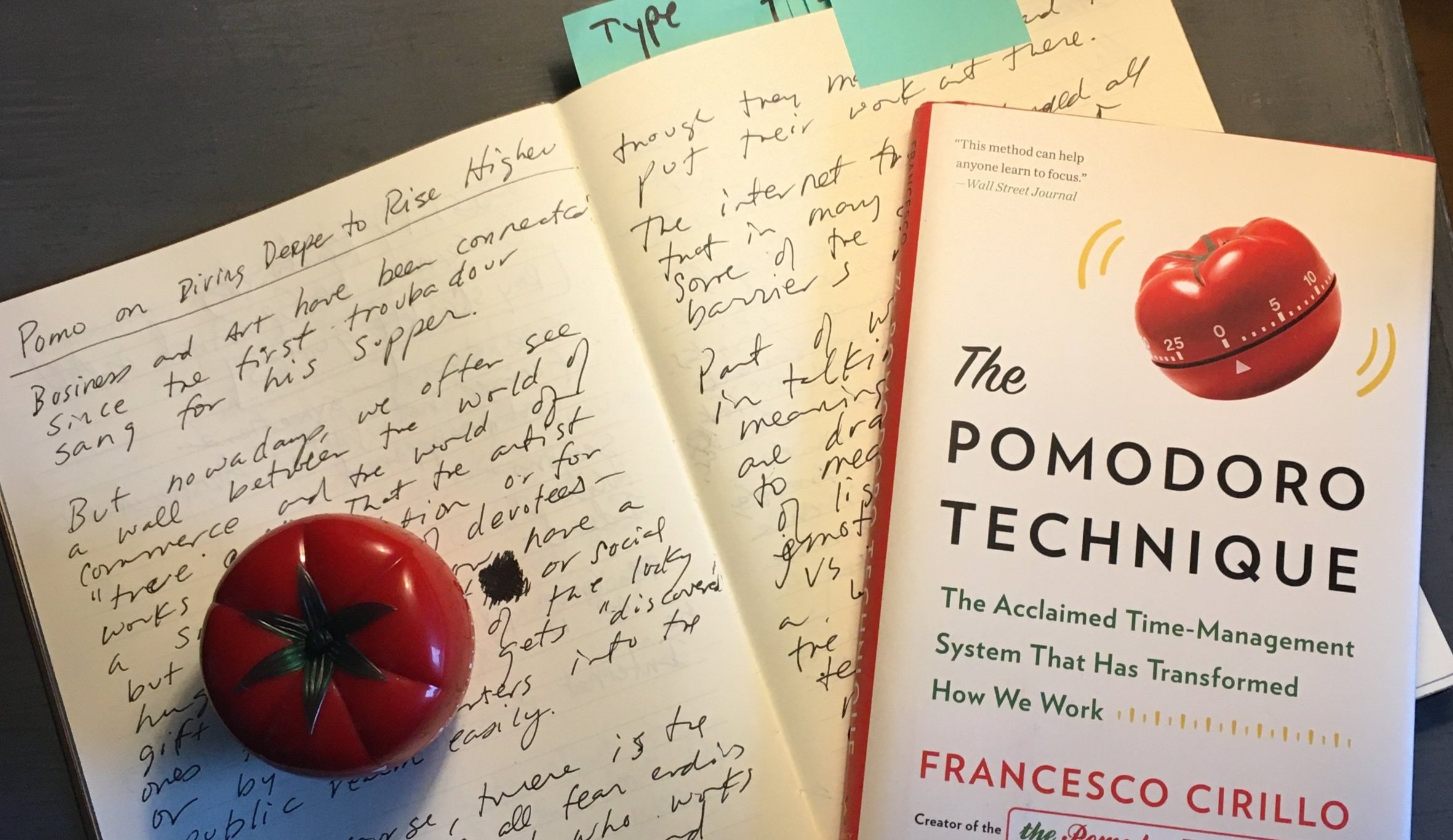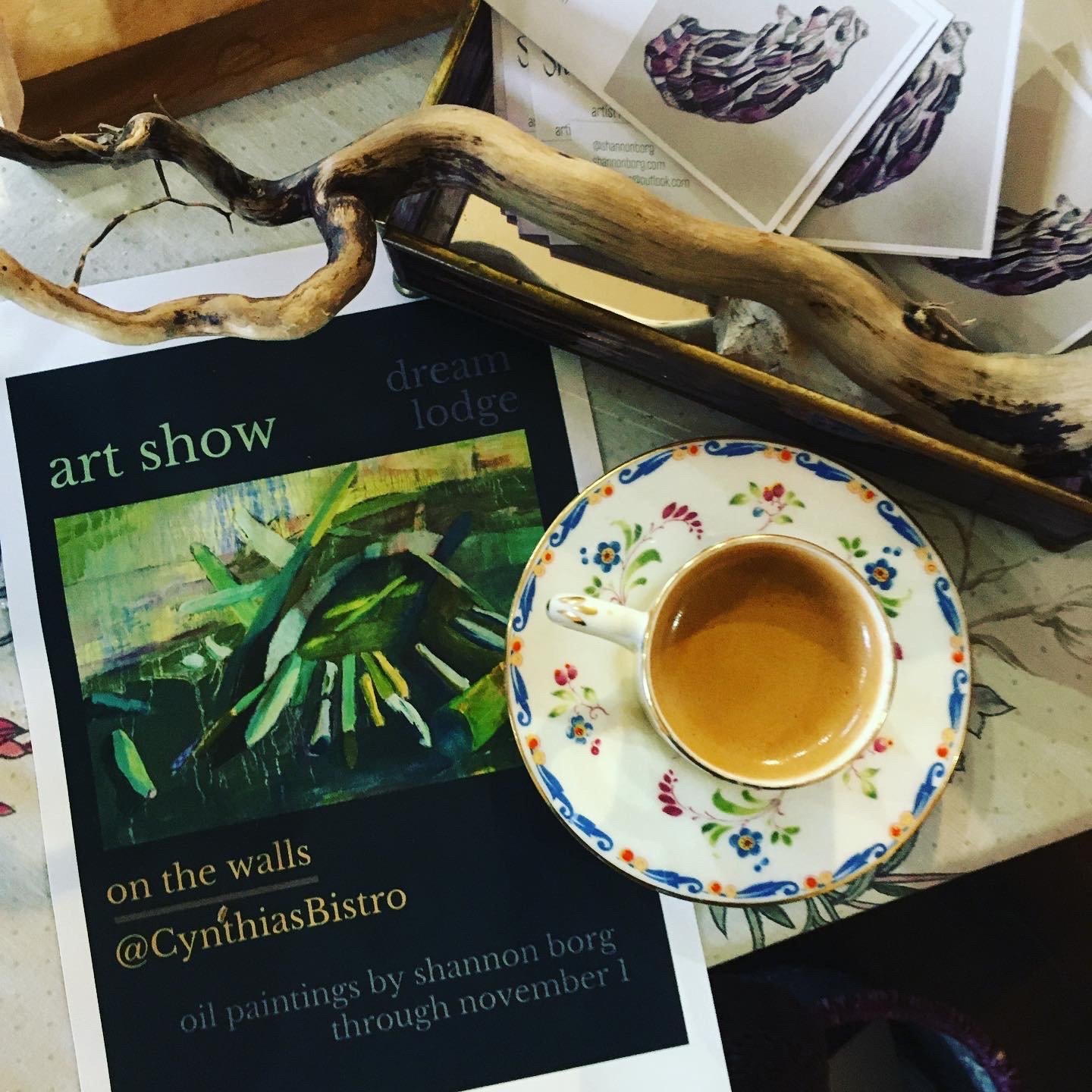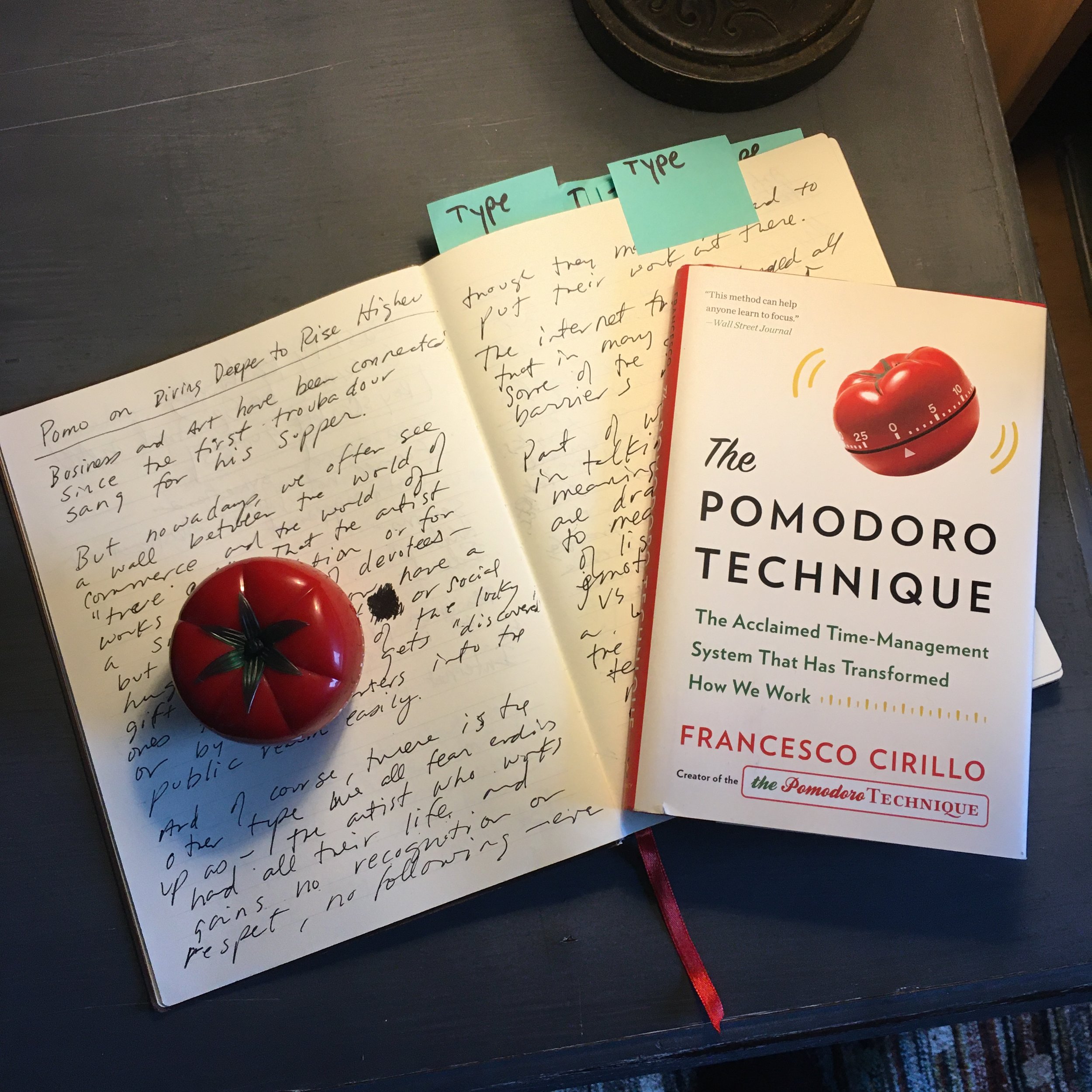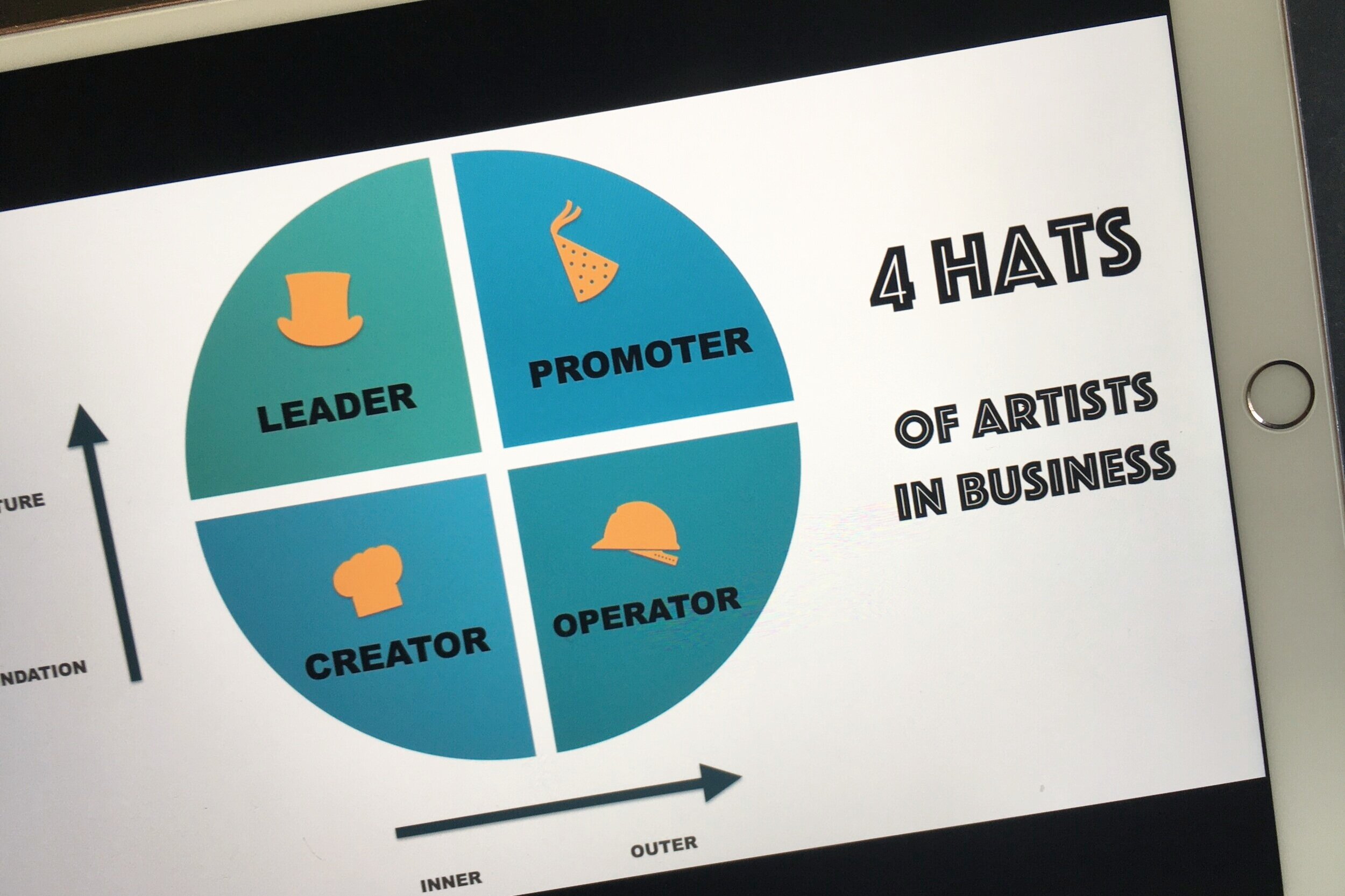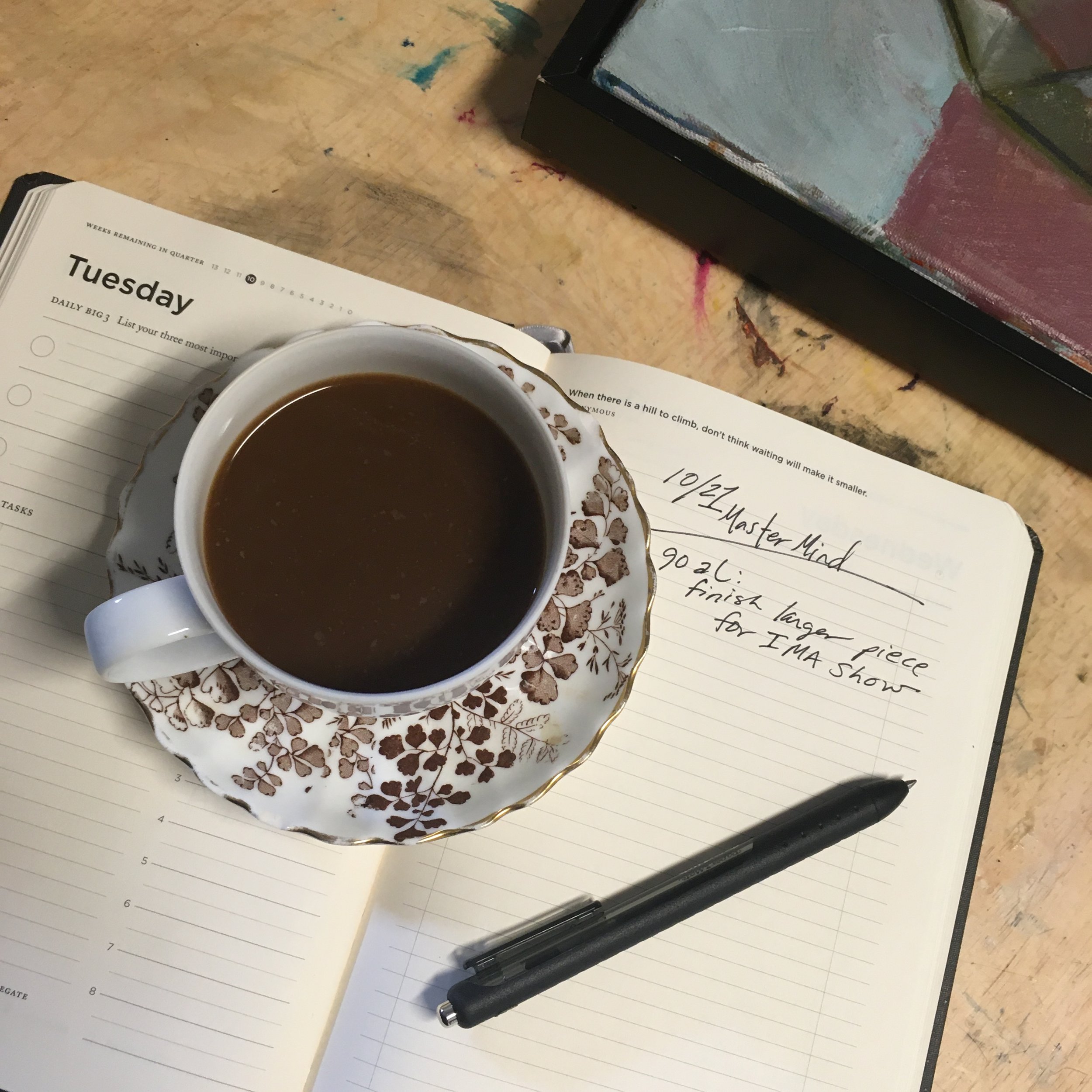Time it, Type it, Tweak it
3 simple steps
to getting any writing project DONE
(without the stress!)
First off, let me say this -
As creative artists, we all know writing is an essential part of your creative process -and an essential part of your practice or business,
No matter what kind of artist you are, you may need or want to write some of the following:
artist’s statement
artist’s bio
gallery notes
a blog
a book
an essay about your favorite artist or piece of art
an Instagram post (long or short)
a promotional brochure
the list goes on and on.
But when you look at that list, most of these things are fairly short, (except a novel - which usually have short chapters all put together).
Think about it.
We love to read small chunks - (the Internet has made that SO clear). So why not write in small chunks, too?
I have adopted a way of writing that I suggest my artist clients also use - especially if you “hate” writing, or have some insecurity or fear around it.
But for now, I want to focus on the task at hand - WRITING.
SCARY!
It feels like everything you write should have some big, essential message about your art, that it should be poetic and grand.
And yes! It can be all these things.
But first, let’s get a basic, elegant, useful PROCESS put together - so you can write ANYTHING more quickly and efficiently.
In case we haven’t met yet, here’s a little more about me:
If you don’t know me, I’m Shannon Borg, an artist and art & business coach.
I help artists (like you) master their business and transform their mindset so they can confidently share their gifts with the world - and be successful on their own terms.
Read my awkwardly long About page, and let me know who YOU are, too!
NOW, get a cup of coffee, and let’s get to it:
Writing!
First, ask yourself these 2 questions:
What is the purpose of this piece of writing?
Is your writing, for example, a creative piece of poetry mean to evoke an idea or emotion?
Is it a helpful blog post to teach a technique?
Is it just a general artists’s statement to put on your website so people can know where you are coming from overall as an artist?
Or is it for a particular show that has a particular focus, purpose, a series of work, etc.
Answering these questions lets us realize that the quote-unquote Artist’s Statement (as an example, or blog post, or novel, or whatever) is ever-shifting, and you may need different versions of it for different reasons.
2. Who is the Audience?
When you know, generally, who you are writing to, it is a lot easier to create a “voice.” When I write my blog posts, I think of my “ideal client,” an artist that has a wonderful talent with their art, but may need some assistance or guidance in particular areas of business or their creative process. This makes it a lot easier for me to picture who I am writing for.
Good!
Now, to the process of actually writing:
The
Time it, Type it, Tweak it
Method
1.
TIME IT
SET A TIMER & WRITE IT OUT LONGHAND,
RECORD IT, or TYPE IT
A timer gives you an end point - this agony won’t go ON AND ON! You can do ANYthing for 20-25 mintues, right? The funny thing is, once you get writing, you often go past the timer. I have even not realized the timer went off, and kept writing for an hour (only sometimes.)
By setting a timer (for 20-25 minutes), you can focus on the thing for a short period of time - then call it GOOD. Read through it or not, but set it aside until the next day, or at least an hour or so.
I also suggest writing this out by hand the first time - for several reasons. You get more connected to your writing in a visceral, emotional way. Just channel your inner poet and go.
NOW - if the writing by hand thing makes you gag - go ahead and type - OR, even RECORD-to-TEXT yourself talking (maybe for a shorter period of time). Whatever it takes to focus on this for a few minutes and get it down.
Find Francesco Cirillo’s book on Amazon!
2.
TYPE IT
The reason I’m suggesting that you start out long hand, type it, or record it (whatever is EASIER) is that - as you saw with writing by hand - you have a more visceral connection to the thing,
the piece of writing itself.
And THEN, when you type it into the computer, you can take off your Creator Hat, put on your Operator Hat and become “all business” about it - edit as you go, fix things, tweak things.
Doing the two tasks separately helps you get a little distance on it.
Then put all three paragraphs together, read it through a few times. Call it good for a while. Put it up on your website, print it out. Let it sit for a few hours or a few days, depending on what it is.
Read it again OUT LOUD, make a tweak or two.
(This is a modification of The Pomodoro Technique (which Kevin, my writing partner and I call a “Pomo” - so we say - “I did 2 pomos” on this subject.)
1.
TWEAK IT
MAKE LAST EDITS & CALL IT GOOD.
SERIOUSLY.
Notice I’m not suggesting you get someone else to read it, or take it to a group mastermind, or anything like that.
I want you to TRUST YOURSELF on this one.
Remember, this is YOUR art, YOUR writing, your blog post, novel, artist’s statement, or whatever it is. It is a living document, always in flux. You can move on, and go back if you feel the need to.
Just let it sit - let it GO:
Some Ways to Let it Sit:
Print out your piece post it on a wall. Read it through out loud.
Put it up on a page your website (live or not live) with a good picture of you at work in your studio, or whatever. Use it! If you want to change it later, you can - it is YOURS.
Keep your writing in a folder on your computer - preferably in the Cloud, like on Dropbox, Evernote, Files or wherever - so you can access it anywhere. Take it out and look at it once a week or whenever you need to.
Write edits ON the HARD COPY. Then type them in. This is old school, but it helps you keep your Operator Hat on, and not get confused.
AT THE VERY END (Don’t get caught up in this earlier in the process): Use Grammarly to make sure there are no typos (like these common ones:
COMMON MISTAKES
(This one is my biggest pet peeve - what’s yours?)
“I grew up in the 1990’s.” WRONG - you grew up in the 1990s.
An apostrophe is possessive (meaning for ownership, the 1990s would have to OWN something) - if you grew up in the 1990’s version of Paris in the 1920s, that would be correct! It is a “version” that the 1990s HAS. Does that make sense? That is a SUPER common mistake. Let me know your pet peeves!
Whether you are writing a novel, a blog post, a podcast episode, an artist’s statement, or a letter of application, this system works!
The artist’s statement is just one part of a toolkit every artist needs at hand - an Artist’s Media Kit. If you are interested in getting your own AMK together, I can help!
I coach artists and teach online courses around these very topics, and I offer a course-plus-coaching program that can help you master all you need to do to have a successful art business. Here’s more information - in the meantime - I hope you enjoyed this post and that it was helpful!
If you’d like to keep receiving helpful -
and thought-provoking - information
about how to create an art business (and think like an artist),
listen to my new podcast -
The Metaphor Mindset - coming in January!
You can also find out more about setting up a business,
how to think about it and make better decisions in my free online training:
So, to recap:
For ANY piece of writing
(especially the daunting ones),
try these 3 simple steps:
1.
Time it
Set a timer for 25 minutes
and write longhand, type, or record,
whatever is easier for you.
Set a specific topic and stick to that until the timer goes off.
2.
Type it
Read over your piece, (print it out if you typed or recorded it),
and make marks on the hard copy - use a timer for this, too,
if you tend to get into the weeds.
Then, take your longhand writing and type it into your computer, and/or making the changes you marked.
3.
Tweak it
Print it out again, read it aloud, making marks
on the hard copy.
Go back to your computer and make small edits.
Call it good.
Move on! You have a life to live!
Q&A:
What if I consider myself a TERRIBLE writer,
or I hate writing?
Can I have someone else do it for me?
There are services who do this - but seriously.
You. Are. Not. A. Terrible. Writer.
That, my friend is a story - and you can change it.
There are a million ways to get around the “writing” part. Try speaking it into a recorder, try it a few different times with your timer, taking a different approach, and choose the best one.
But only YOU can tell your story!
Depending on what you are writing, just tell it like you were talking to a friend. So just try it. If you STILL have big issues and blocks - email me! We can work through it together, no charge. I want to see you succeed and get past these blocks, but YOU need to take action on that. (Tough love, but LOVE!)
How is this different from
Julia Cameron’s “Morning Pages”?
Isn’t it just BLAH BLAH onto the page?
This type of writing CAN be just blah, blah, word vomiting onto the page. BUT - when you have a purpose for each 20 -minute session: “Now I will write about my Process,” then it has more focus. Then you can go back and choose the best bits, read other artist’s statements you like, and model it after that - with your own Personality, of course!
In conclusion
You can DO this! Remember, no one cares as much as you do about this. So just relax, get a version out there, and live with it, then tweak it as life goes on!
If you would like to go further with this,
here is how we can work together:
Schedule a free 30-minute Discovery Call with me to talk about where you are in your art, business, creative process, and what you might want to do next, and how I can help.
Everybody needs a coach! This process has been so helpful to me, I just want to pass it on to help other artists - and see if I can create a business doing what I love! I can help you do the same - no matter what your passion is. So give me a call - we’ll have coffee, we’ll talk!
Getting Past the Illusion of Difficulty
“If a person wants to work on herself, she must destroy her peace.”
Writing may seem hard
(and it may never get that much easier for you)
BUT
Creating a PROCESS that is helpful is the best way to:
Relieve some of the anxiety around writing
Clarify your subject matter and relieve confusion
Calm the illusion of difficulty
Realize that you are not alone (all writers go through this)
Create compassion for yourself (and know you are in good company)


